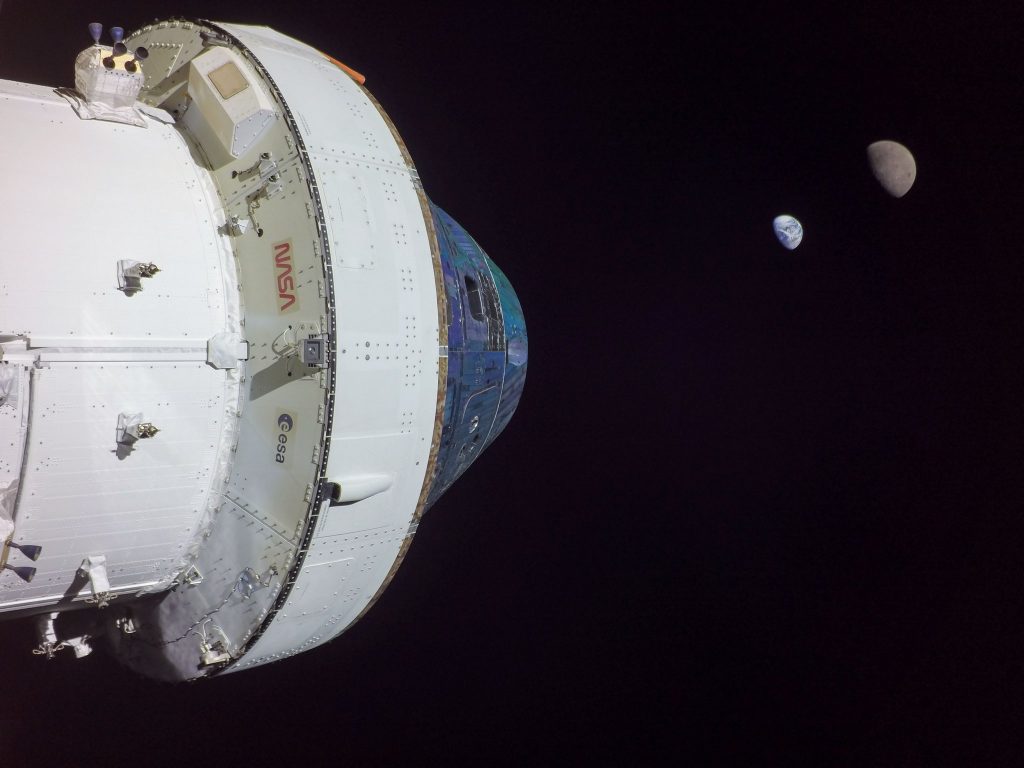The Artemis 1 mission’s Orion spacecraft has successfully entered and exited a distant retrograde orbit about Moon. DRO is a stable and easily accessible orbit requiring a low velocity change \Delta V. In DRO, Earth‘s non-negligible gravity contributes to a 3-body problem that makes the inertial space orbit non-Keplerian: an ellipse centered — not focussed — on Earth.
The attached animation, which I generated by numerically integrating the 3-body motion equations, displays a DRO in reference frames fixed relative to distant stars [left pane] and rotating with Moon about Earth [right pane]. From the north celestial hemisphere, Orion [red] orbits anti-clockwise relative to Earth [cyan], like our solar system’s planets, but clockwise (and hence retrograde) relative to Moon [white].
For Artemis 1, Orion spent almost a week in DRO, completing a half revolution about Moon (and a quarter revolution about Earth), and is currently returning to Earth. The crewed Artemis 2 will use a free return trajectory for safety, and future Artemis missions will use Near Rectilinear Halo Orbits to avoid Moon periodically eclipsing Earth.
![Far from Earth [cyan], the Orion spacecraft [red] entered a distant retrograde orbit about Moon [white]. Relative to Earth [left pane] Orion orbits one way, but relative to Moon [right pane] Orion orbits the opposite way.](http://woosterphysicists.scotblogs.wooster.edu/files/2022/12/DRO8.gif)
Far from Earth [cyan], the Orion spacecraft [red] entered a distant retrograde orbit about Moon [white]. Relative to Earth [left pane] Orion orbits one way, but relative to Moon [right pane] Orion orbits the opposite way. (You may need to click to start the animation.)

From a distant retrograde orbit, a camera at the tip of an Orion solar panel photographs Earth and Moon, 2022 November 28.

Thanks, Mark! I enjoy reading your posts as well.